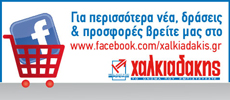Prefectures of Crete
Chania Prefecture
Municipality of ChaniaMunicipality of ApokoronasMunicipality of PlataniasMunicipality of KissamosMunicipality of Kandanos - SelinosMunicipality of GavdosMunicipality of Sfakia
Rethymnon Prefecture
Municipality of RethymnonMunicipality of MylopotamosMunicipality of AmariMunicipality of Agios VasiliosMunicipality of Anogia
Heraklion Prefecture
Municipality of HeraklionMunicipality of MaleviziMunicipality of Archanon - AsterousionMunicipality of FestosMunicipality of GortynaMunicipality of ChersonissosMunicipality of Minoa PediadosMunicipality of Viannos
Lassithi Prefecture
Municipality of MirampeloMunicipality of SitiaMunicipality of IerapetraMunicipality of Oropedio
Archaeological Museum of Rethymno
The Archaeological Museum of Rethymno was founded in 1887 by the Society of the Friends of Education. Today it is housed in the pentagonal bastion in front of the central, east gate of the Fortezza. This building represents one of the fortified construction works accomplished by the Turks, who chose this location in order to defend the central entrance to the fortress.
The archaeological findings are exhibited in the Museum in archaeological order and include the following collections:
Late Neolithic and Proto-Minoan findings, mainly vessels, tools and figurines from the Gerani and Melidoni caves, objects of the Middle-Minoan period found at the archaeological sites of Monasteraki, Apodoulou and Vryssina. Most interesting in this unit are the collection of seals from Monasteraki and the replica of a settlement from the same area, findings of the Late Minoan period mainly from the cemetery of Armeni, but also from other areas such as Mastabas, Stavromenos, Pangalochori and Syvritos. The objects include bronze tools and weapons, an impressive serrated helmet, a large variety of ceramics, jewellery and cameos, as well as earthenware figurines, one of which depicts the famous goddess with raised hands from Pangalochori. Furthermore, the earthenware urns with floral and geometrical ornaments, mainly finds from the cemetery of Armeni, are also interesting, findings of the Geometrical - Archaic Period mainly from the archaeological sites of Axos and Eleftherna, objects from the Classical, Hellenistic and Roman Period, mainly from the areas of Stavromenos and Argyroupolis. This unit boasts Roman oil lamps with various depictions, gold jewellery from the area of Stavromenos and glass vessels from the Hellenistic and Roman period, Collection of coins, figurines from Melidoni and Axos as well as pots of unknown origin from the Classical and hellenistic period, inscriptions from the area of Eleftherna, collection of sculptures from the areas of Stavromenos, Eleftherna and Argyroupolis.



 ENGLISH
ENGLISH







